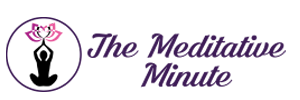
Are you looking for fun ways to get your young ones to meditate with you? Kid’s aren’t eager to sit still and zen out with their parents, but when meditation is turned into an active exchange, their interest increases.
Below are a few Active Meditation Ideas to consider. A link to all 20 ideas from our kid’s classes is also listed at the end of the article. Enjoy!
Body awareness method – Ask child to close their eyes and pretend that they are a tree, starting out as a small seed and growing toward the sky. Allow them time to shift their body however they choose as they grow into a large tree. If it is helpful for your child, guide them through the growth process: you are a tiny seed, now you are sprouting small roots into the earth, now you are growing out of the ground, now you are growing branches. Only do this if the child needs assistance, otherwise allow them to use their imagination and guide you through their growth process. This serves to bring awareness into the body. When done, ask what kind of tree they pretended to be. When they were growing, how did it feel? Did they think it was fun or funny?
Sound awareness method – Have the child close their eyes and focus on a sound. Begin by having them tell you what type of sound it is. Is it a bell, a whistle, a drum? Once the child is focused in and able to identify the type of sound, begin to move the sound around the room. Ask them to identify where in the room the sound is coming from. Is it coming from the right, the left, the back the front? This begins to bring focus out of the mind and out of the body and heighten sensory perception.
Visual imagery method – Both the adult and the child close their eyes, allow themselves a moment to relax and center into the meditation with two deep breaths. Once centered, the child begins to explore their imagination through stories. For example, if the child goes into their imagination they may see something like this and choose to share it so that the adult can share in the visual imagery: “I see us walking beside a rainbow river and there are animals that are part dog and part frog and they are hopping up and licking us in the face.” There are no restrictions or limitations placed by the adult on what the child can express. The adult allows the child to guide them through the meditation based on the child’s visual imagery in their imagination. This allows the child to share with the adult in a way that they may not otherwise be able to share. It is key that the adult does not judge or assess the guided meditation, only allows the child the ability to show the way.
Breath method – Make a game out of breath. Ask the child to begin by breathing normal. Don’t change anything, just notice how they are breathing. Is it at the top of their lungs, the middle of their lungs, the bottom of their lungs? Wherever it is, have them take a piece of masking tape and mark it across their shirt. Now, the object of this game is to have them focus enough on their breath that they can take new pieces of tape and begin to mark as the breath moves down, giving them a visual mark on their shirt for how their lungs are expanding and their diaphragm is dropping as they bring awareness to the breath (and body). In order to move the tape down their shirt, breath exercises are a must. Here is a great site to for some of these exercises. DO NOT OVEREXERT. Do not push beyond what you can handle. Take it slow and focus. http://cas.umkc.edu/casww/brethexr.htm
Singing method – In this method you combine song and touch. Take any affirmation or mantra – for example we can use the affirmation I am love, I am light – and form a tune that resonates for you and your child. As you sing the tune, touch a different finger to your thumb on each syllable. It isn’t always necessary to sing aloud, though it is often far more fun. A benefit of this method is that it can be used to quickly bring calm to the child in situations where they feel stress or anxiety.
>>> Click Here For 20 Meditation Options For Kids <<<








